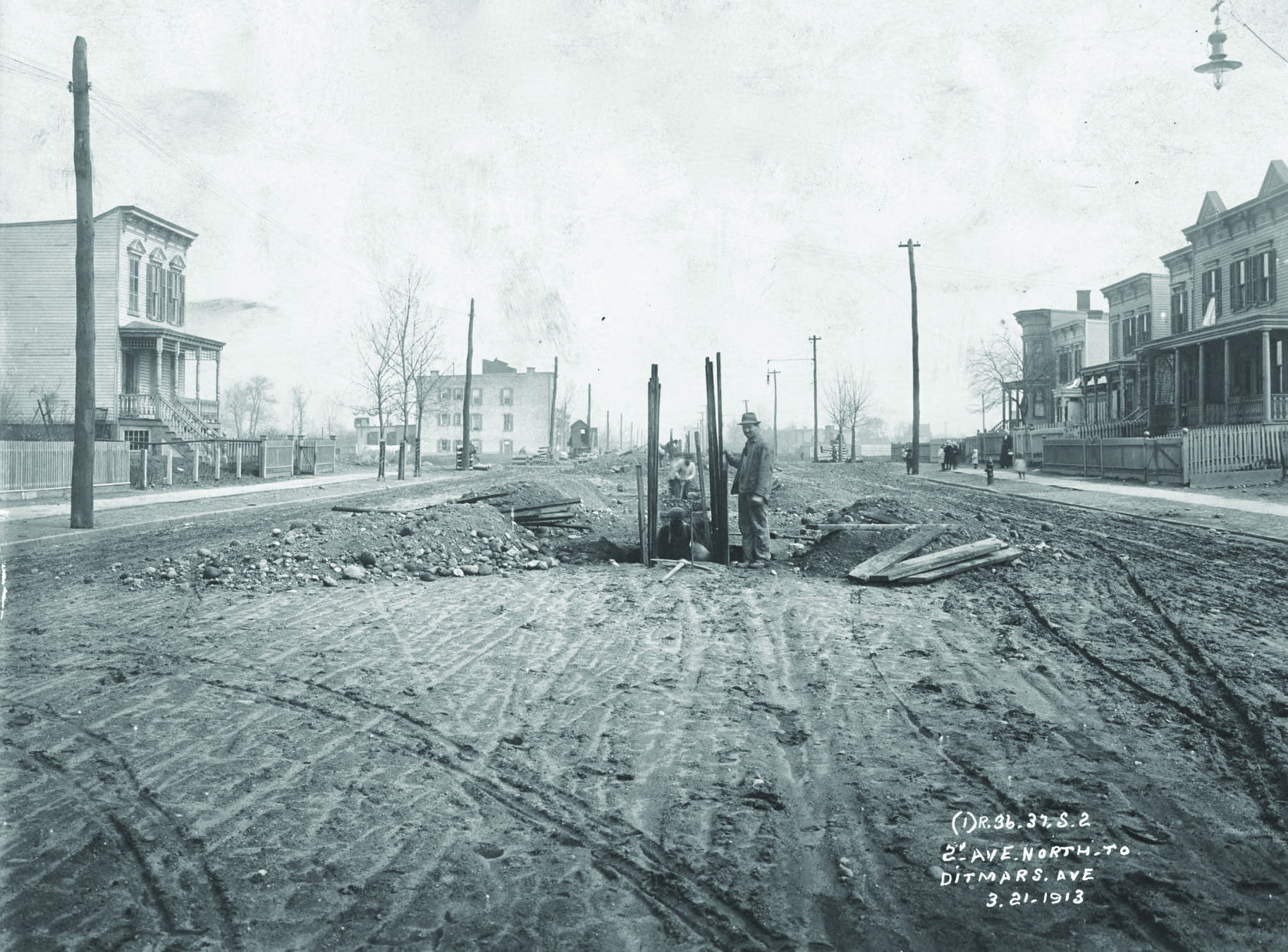Under The Shadow Of Astoria’s “El’ Train

Photo Queens Historical Society: In a photo taken on March 21, 1913, we see workers digging a trench in the middle of 31st Street one block before Ditmars Boulevard in preparation for the start of construction of the elevated line.
When one looks at the visual history of Queens, the changes that have occurred over the past 120 years can sometimes be absolutely striking. Where farmland and swamps once sat now stand heavily populated communities and multi-lane highways.
Here in Astoria, the physical landscape of the neighborhood has been altered so dramatically that in some cases, one cannot tell what location they’re looking at when examining an old photograph. One such example is the elevated train tracks that tower above us today.
The construction of the elevated train, or “El” for short, from 1913 to 1917 changed the way many generations of Astorians would live forever. If you were a pedestrian walking along 31st Street in 1913, (then known as 2nd Avenue), the scene was remarkably different, laden with red or dark grayish brick and sometimes hard-packed dirt made smooth and firm from years of passing horses and carriages. On either side of the street stood wood-framed homes on hills, yes, hills, set back from the sidewalk along with the sight of horse stables and chicken coops. And then, of course, would be the most impressive visual of all: the open sky! It’s hard to imagine that there was ever a time when people living along 31st Street were spared from the shadow of the steel elevated roadway and the oppressive noise from the N and W trains.

Photo Jason D. Antos: The same view taken in 2021. The building which houses Mela Pizza House on the right is the sole surviving structure from the previous photo and has stood on the northeast corner for almost 125 years.
It was on February 1, 1917, that the roadway opened for train service, along with the rest of the Astoria Line, which was originally part of the IRT (Inter-Borough Rapid Transit) as a spur off the Queensboro Line. Trains have run between Grand Central Station and Astoria daily ever since.
The opening of the line was featured in the Brooklyn Daily Eagle: “After a wait of years, the last three spent anxiously watching the construction of the steel work, residents of Astoria and Steinway will go to their homes over the new Astoria elevated Line this evening.” The trip cost just five cents.
Dignitaries on the inaugural ride included IRT President, Theodore P. Shonts, and Queens Borough President, Maurice Connolly. Later the next evening at Bohemian Hall, residents of Astoria were treated to a motion picture show displaying the opening ceremonies and a view from the train as it traveled from Manhattan to Astoria. Guests were invited to stay for beer and dancing in celebration of this remarkable local achievement which changed the face of the neighborhood for all time.

















